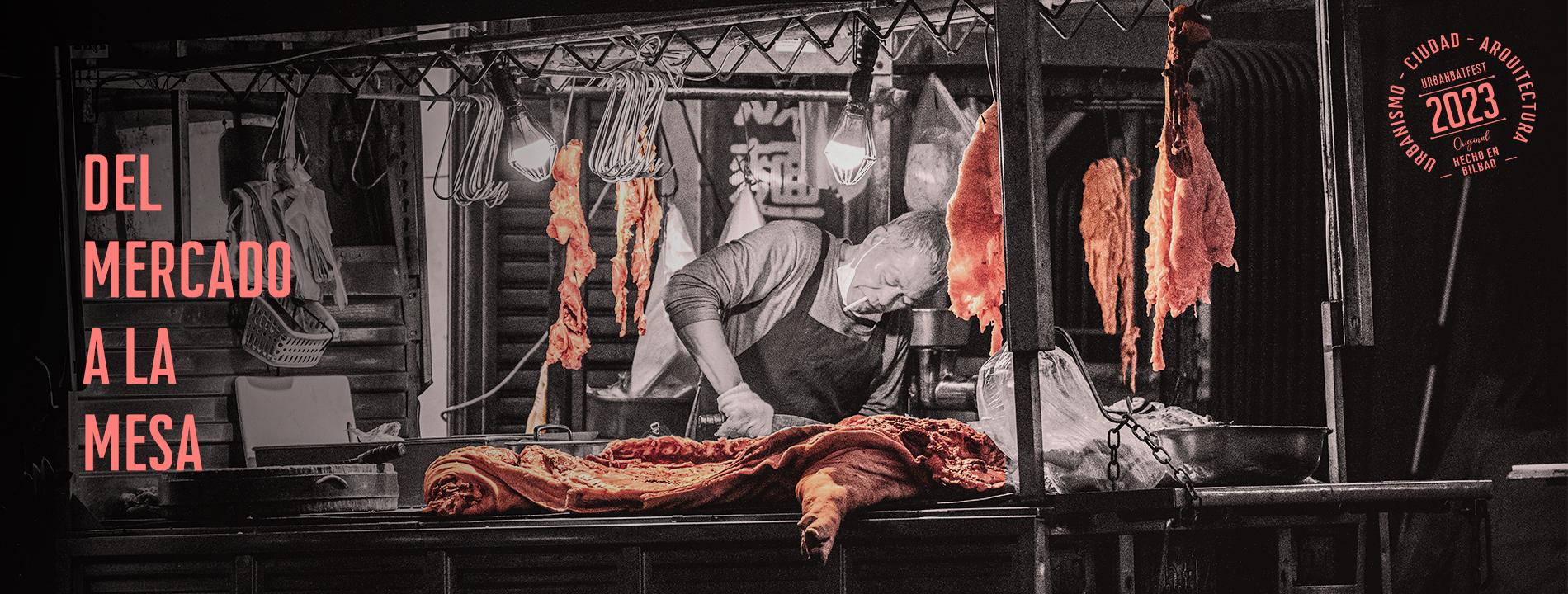
From the Market to the Table
How does food shape the design of our cities?
Architect and researcher Carolyn Steel says in the book Hungry Cities that "like people, "cities are what they eat". A simple yet profound statement that implies an understanding of the extent to which the development of cities is inseparable from the way we feed ourselves.
Feeding cities requires a titanic effort. An effort that has a greater physical and social impact on our lives and the planet than anything else we do.
We turn the old Ensanche market into a large dining room to taste a rich menu of interventions, which highlight some of the debates on how our food system conditions the spatial design of our cities.
From the market to the table in 4 steps:
1. Cultivating the sea with Arantzazu Luzarraga
PhD in Architecture. She is currently a lecturer at the Donostia-San Sebastián School of Architecture (UPV-EHU). Her research interests focus on the study of infrastructures, the spatial strategies of global actors and how large-scale economic and political decisions impact everyday life.
Arantzazu will talk to us about cultivating the sea or designing a maritorium: two antagonistic means of inhabiting coastal spaces. Fishing, unlike agriculture, is a predatory activity that has traditionally forced its practitioners to live in balance with the resources available to them. Today, bluefin tuna fattening farms in the Mediterranean and their global tuna distribution logistics have changed this situation. The disconnect between what we eat and how we live forces us to reflect on the need to incorporate the sea's logic into the design of the coastal strip we inhabit.
2. Running out of a McDonald's with Iago Carro
Architect and master's degree in urban planning from the University of A Coruña. Researcher and lecturer at the Higher Technical School of Architecture of A Coruña (2012-2015). A member of Ergosfera, a working cooperative dedicated to urban research and planning practice since 2006.
One of the specific elements that embody the relationship between food and the contemporary city is also one of the most discussed and criticised urban components: transnational fast-food franchises. His research project McDonald's: The Place versus the Metaphor is an approach to this phenomenon with a planetary scale and impact based on its condition as a primitive experiment in the global arena and its study as a set of generic architectures, urban components and social places which, when approached from the perspective of their potential popular usage (both formal and informal), are revealed as spaces of great public interest.
3. Entering the kitchen of Cierto Estudio
An architecture studio founded in 2014 by six young female architects. Having been born of plurality, their thinking is inevitably diverse and is reflected in their collaborative working methodology that seeks the maximum architectural vindication and a character of its own.
In their project Big Bang Kitchen they explore scenarios for the near future of kitchen design in our homes. A proposal for greater versatility, defining the kitchen as pieces of furniture and not as a room, overcoming the archetypal zoning, opening up the kitchen to multiple activities, with the capacity to transform over time according to inhabitants’ needs.
4. Going out for pintxos with Gustavo Alba
The day will round off with the presentation and tasting of pintxos designed expressly for the occasion by Gustavo Alba, Master in Cuisine, Technique and Product at the Basque Culinary Center and chef at Umamie.